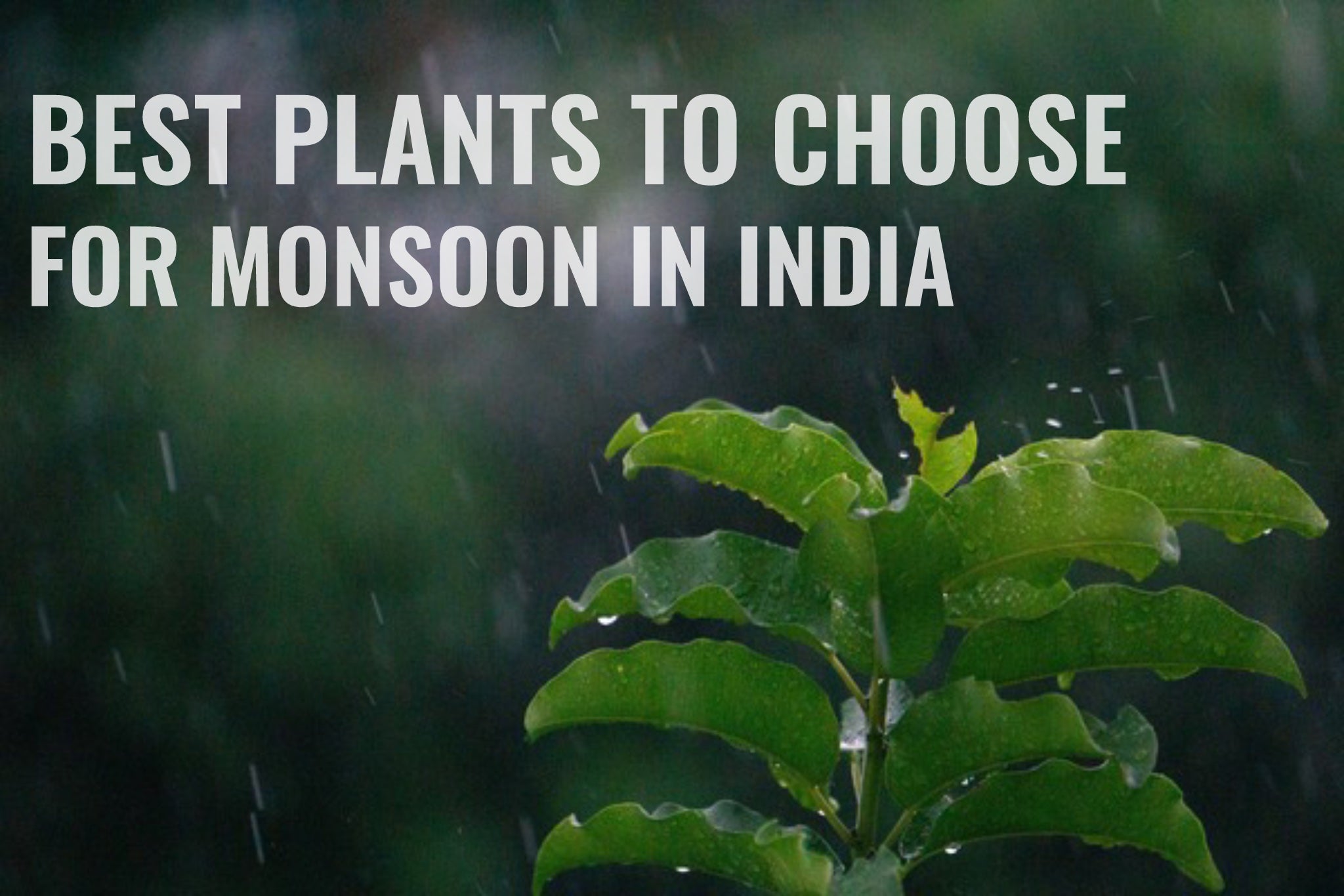Best Plants To Choose For Monsoon In India
India’s monsoon season stretching from June to September brings much-needed rain to the subcontinent revitalising landscapes and replenishing water resources.
This season is also ideal for planting various flora that thrive in the wet and humid conditions, whether you have a garden, balcony or just a few pots indoors here are some of the best plants to choose for the monsoon in India.
Top 10 Monsoon plants and it's characteristics:
1. Bougainvillea :

Bougainvillea is a resilient plant known for its vibrant and colourful bracts that bloom in abundance during the monsoon. This drought-tolerant plant can withstand heavy rains and thrives in well-drained soil, its vivid colours ranging from pink to purple, red, orange, and white make it a popular choice for adding a splash of colour to gardens and balconies.
2. Hibiscus:

Hibiscus with its large showy flowers is another excellent choice for the monsoon season. It thrives in warm tropical climates and benefits from the increased moisture. Regular pruning and adequate sunlight ensure that hibiscus plants remain healthy and produce an abundance of blooms.
3. Jasmine :

Jasmine plants are highly favoured for their fragrant flowers which bloom profusely during the monsoon. These plants prefer well-drained soil and partial to full sunlight. Varieties such as jasminum sambac are particularly popular in Indian gardens for their strong fragrance and ease of cultivation.
4. Ginger :

Ginger is not only a culinary delight but also a perfect plant for the monsoon season. It requires a warm and humid climate to grow making the monsoon an ideal time for planting. Ginger plants need well-drained soil rich in organic matter. Apart from its uses in the kitchen ginger has numerous medicinal properties making it a valuable addition to any garden.
5. Turmeric:

Like ginger turmeric thrives in the monsoon’s wet and warm conditions known for its bright yellow rhizomes, turmeric is a staple in Indian cuisine and traditional medicine. Planting turmeric during the monsoon ensures rapid growth and it is typically harvested in about 8-10 months.
6. Colocasia or Giant Taro :

Colocasia also known as Taro is a water-loving plant that grows well in the monsoon. Its large heart-shaped leaves are a common sight in Indian gardens. Colocasia prefers a wet and marshy environment making it ideal for areas that experience heavy rainfall. The plant’s tubers are edible and used in various culinary dishes.
7. Curry Leaf Plant:

The curry leaf plant is also a staple in Indian kitchens. It thrives in the monsoon’s humid conditions producing luscious and aromatic leaves. The plant requires well-drained soil and partial to full sunlight. Regular pruning encourages bushy growth and ensures a steady supply of fresh leaves for cooking.
8. Rain Lily :

9. Marigold:

Marigolds are hardy annuals that thrive during the monsoon season. Their bright, cheerful flowers come in shades of yellow, orange and red. Marigolds are easy to grow and require minimal care making them a popular choice for both novice and experienced gardeners. They also have pest-repellent properties which help protect other plants in the garden.
10. Banana Plant:

The banana plant is well-suited to the monsoon’s tropical conditions. It requires plenty of water and thrives in the humidly wet environment of the rainy season. Banana plants grow quickly and produce large broad leaves that create a luscious tropical feel. The plant also bears fruit adding both aesthetic and practical value to your garden.
Tips for Monsoon Plant Care:
1. Soil and Drainage:
Ensure that the soil is well-drained to prevent water logging which can lead to root rot also adding organic matter like compost can improve soil structure and drainage.
2. Pruning and Maintenance:
Regular pruning helps maintain plant health and encourages new growth and removes any dead or diseased parts to prevent the spread of infections.
3. Pest Control:
The monsoon season can bring an influx of pests so it's better to use organic pest control methods such as neem oil or companion planting to protect your plants.
4. Watering:
While the monsoon provides ample of rainfall it’s essential to monitor soil moisture levels and to avoid overwatering and ensure that potted plants have proper drainage.
5. Fertilisation:
Use organic fertilizers to provide essential nutrients to your plants such as compost, vermicompost and manure are excellent choices for enriching the soil.
By choosing the right plants and following proper care practices you can create a thriving and vibrant garden that flourishes during the monsoon season which embraces the rain and enjoy the luscious green beauty that the monsoon brings to your surroundings. You can Buy Plants Online on myBageecha, which has a range of flowering plants which are sure to make your garden bloom with vibrancy!






